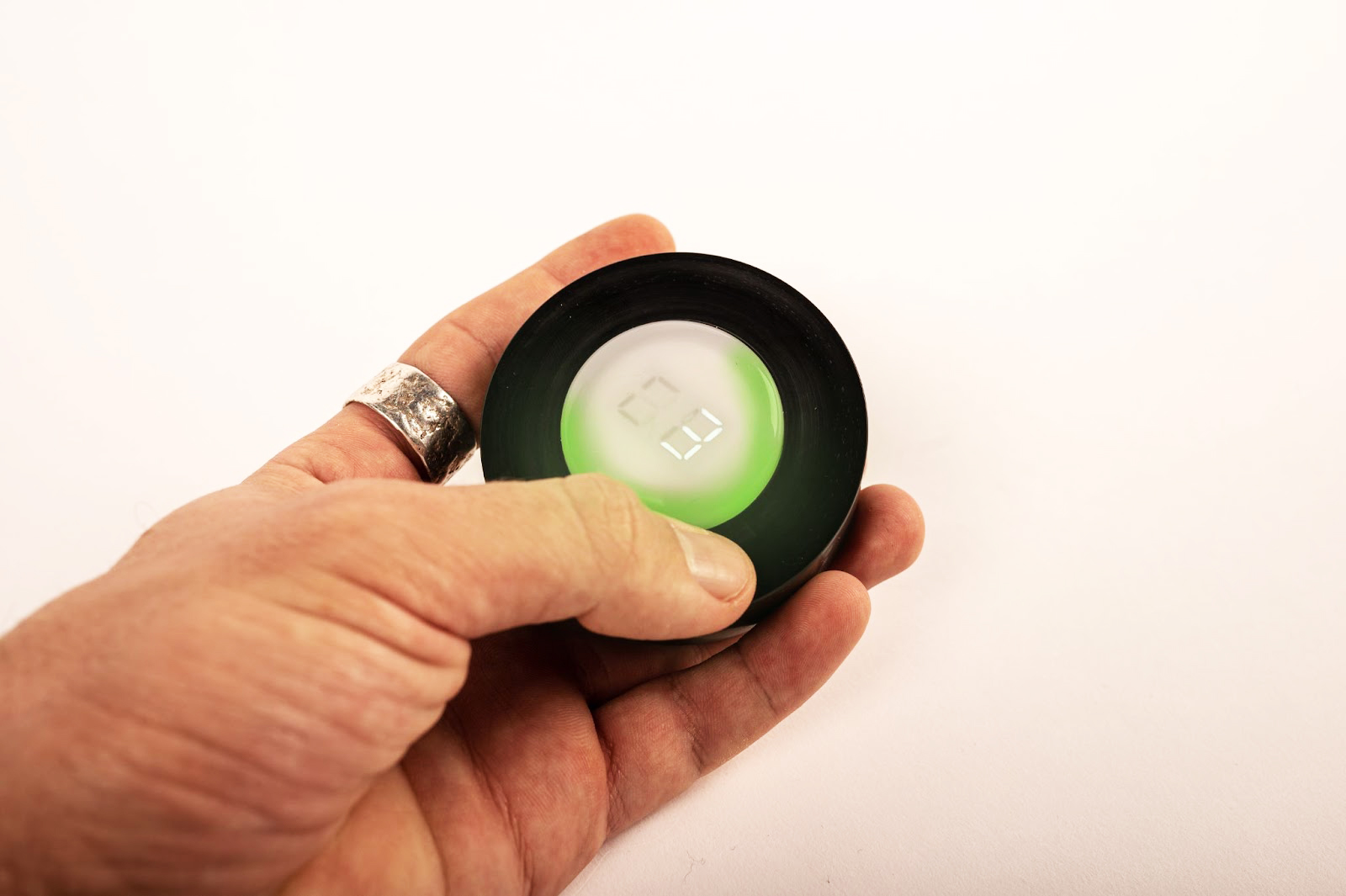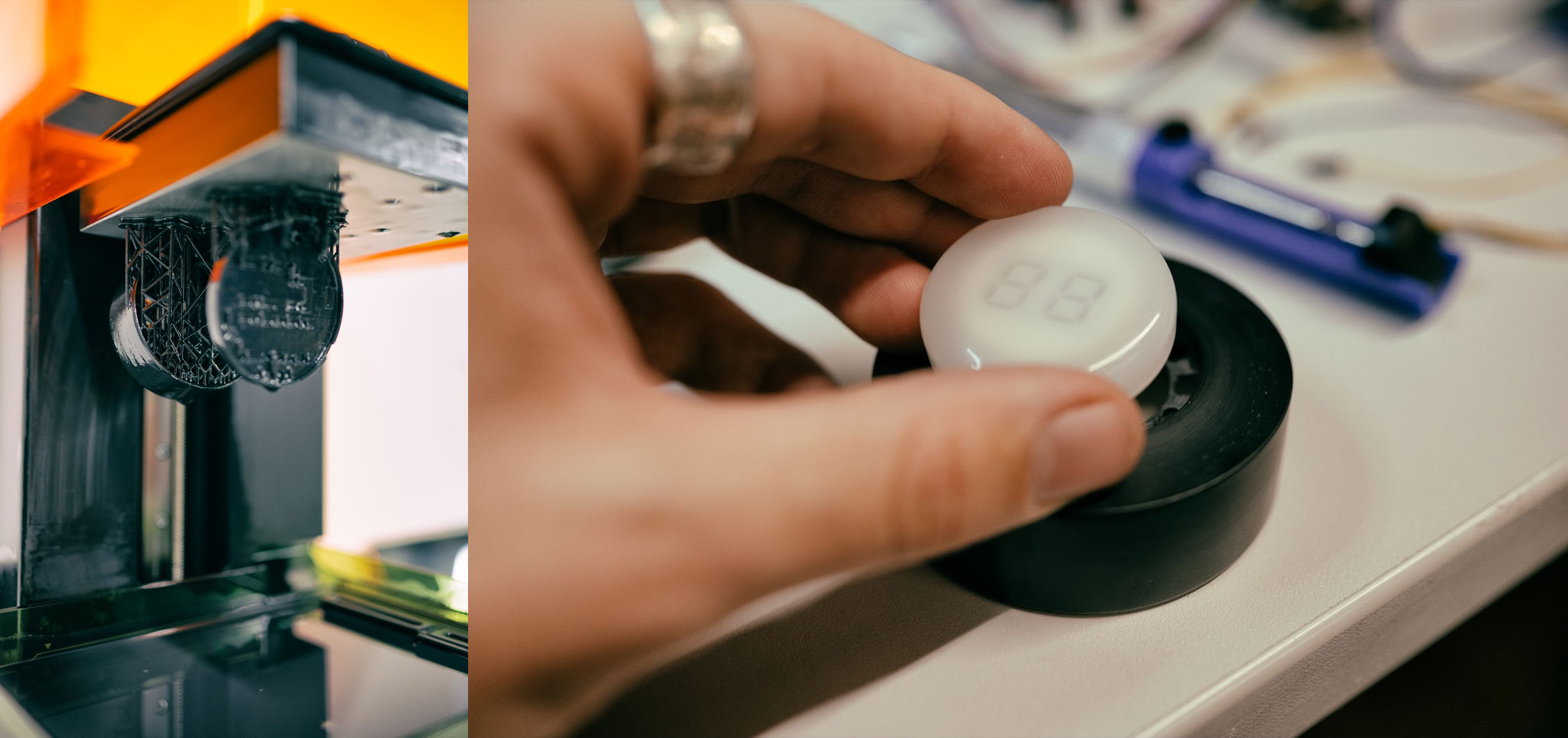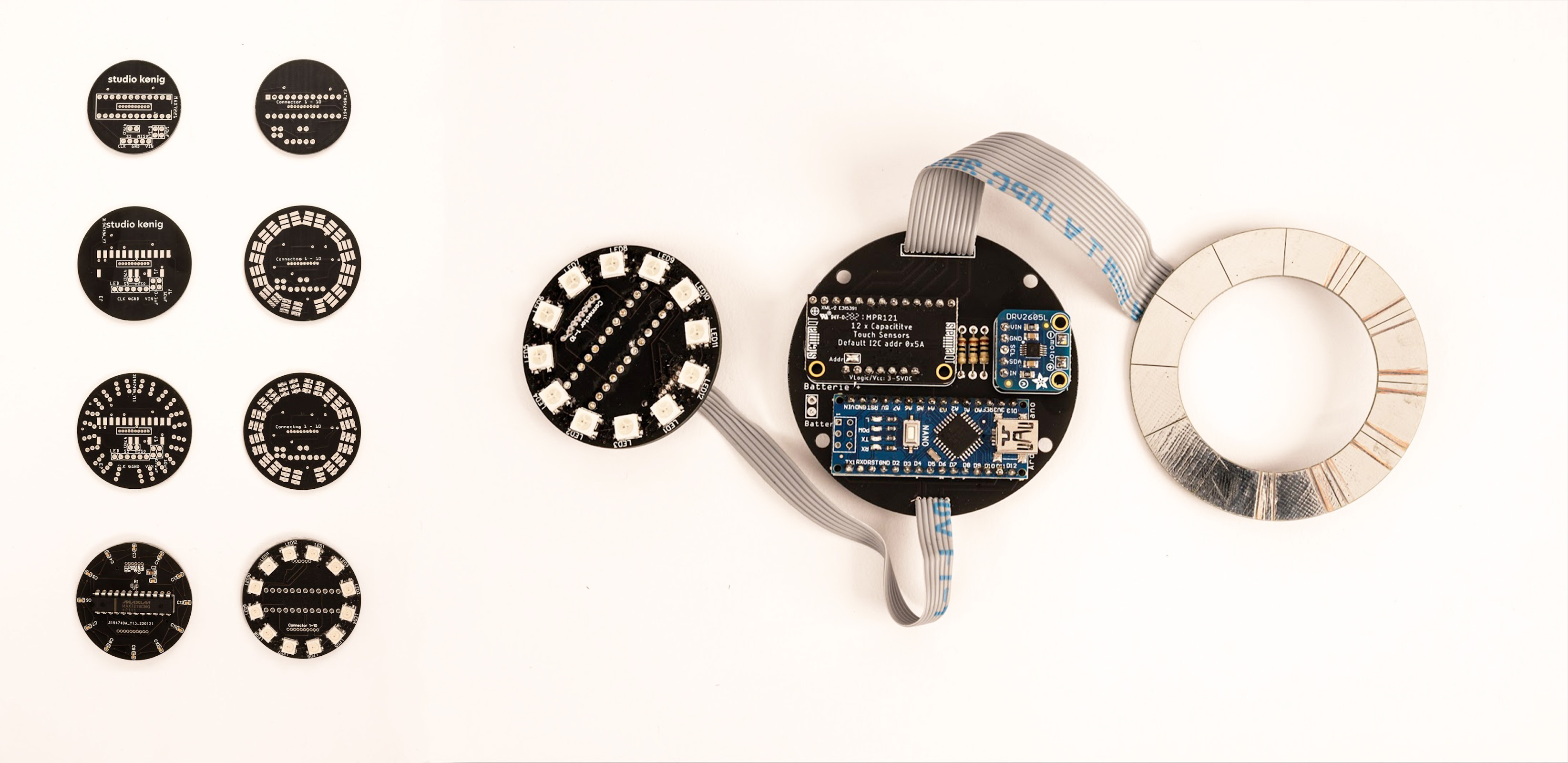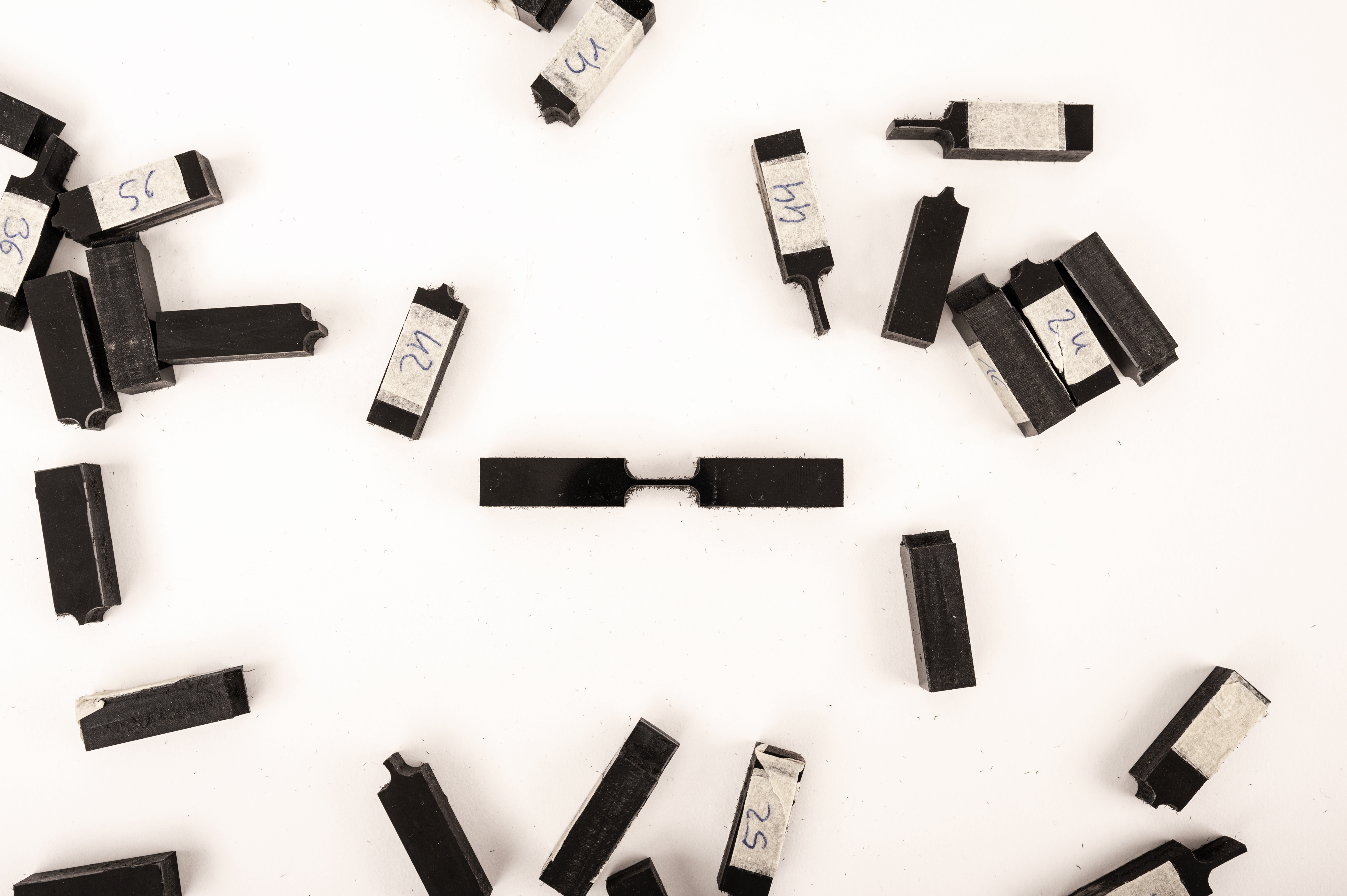
explorative
experimental
exact
This project examines different design strategies and helps me understand my own process. One is experimental, and the other is exact. Each strategy is its own little project, and the results reflect the overall strategy behind each process.
» documentation of the processes «experimental
The second process, based on an experimental strategy, addresses the topic of compliant mechanisms. The basic idea of the project is to replace complex lazy susan hinges with a compliant variant.
After testing several 3D printed prototypes, I built and programmed a test rig to evaluate the wear and tear of the hinges. After running the rig on 14 hinges and analyzing 1.000.000 data points, I could select the best specifications for the final hinge.
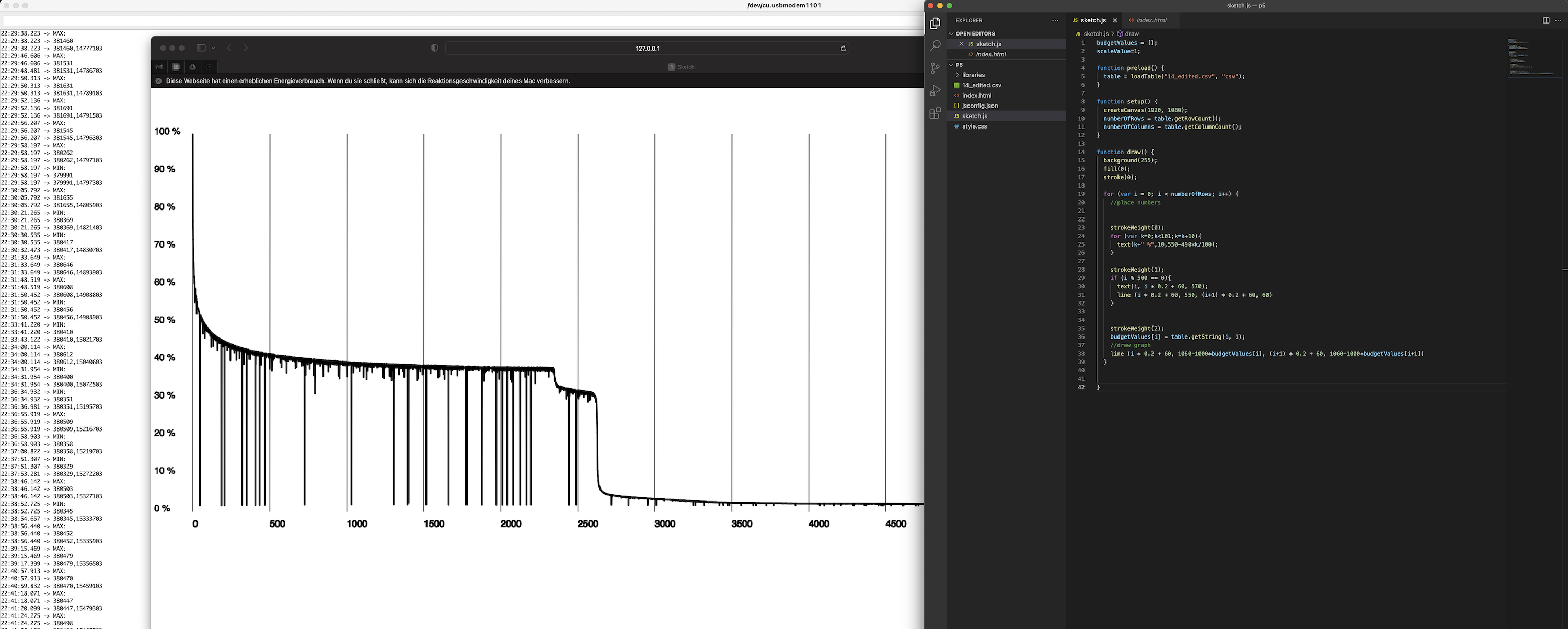
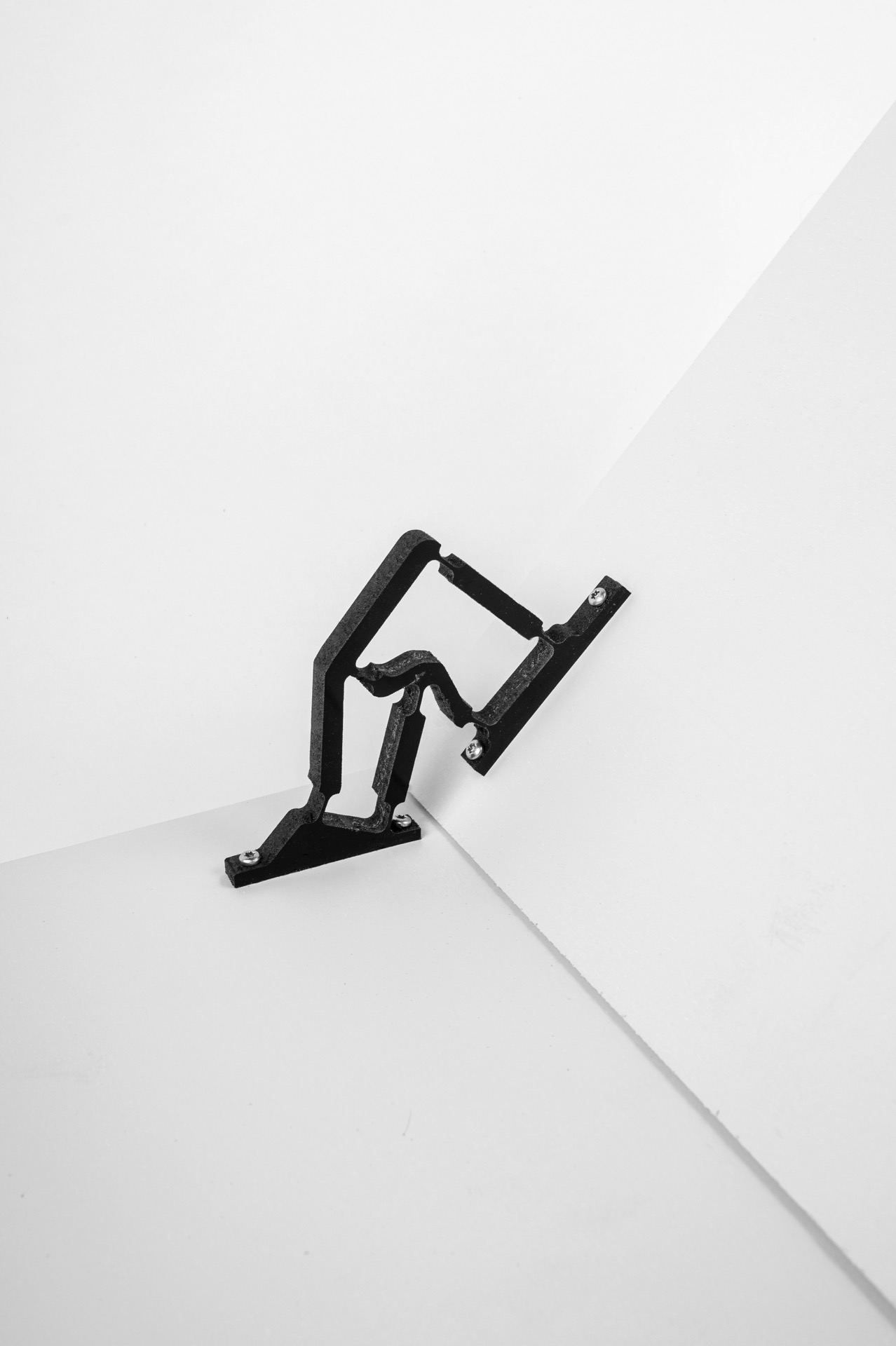
exact
The exact project is a kitchen timer that is operated via a touch ring.I first created a fast Arduino setup to develop the software and designed several iterations of custom-made PCBs and housings when I designed the hardware.
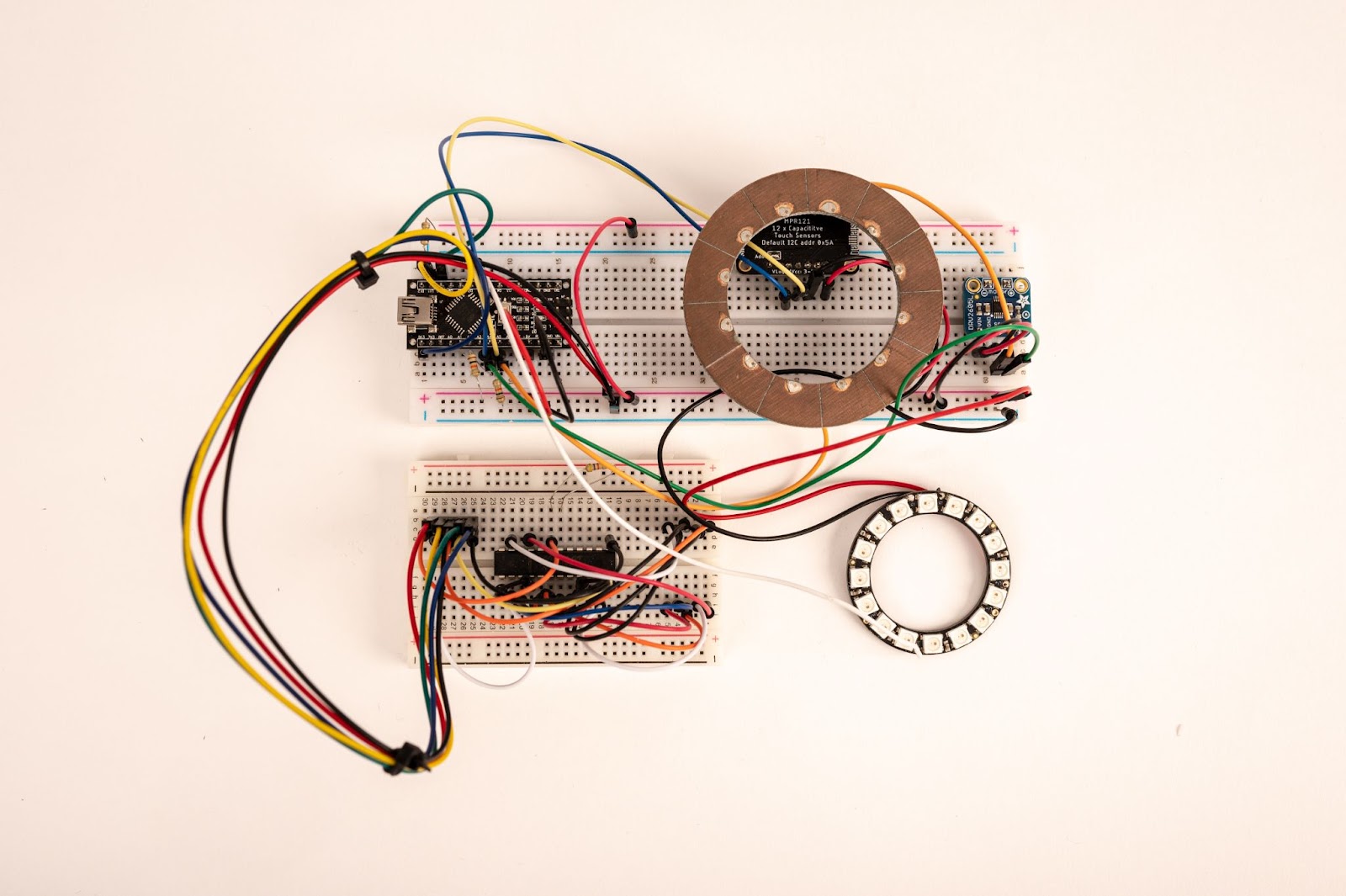
The housing and the display are custom made using SLA printing and a turning lathe, and the PCBs are a custom design.
